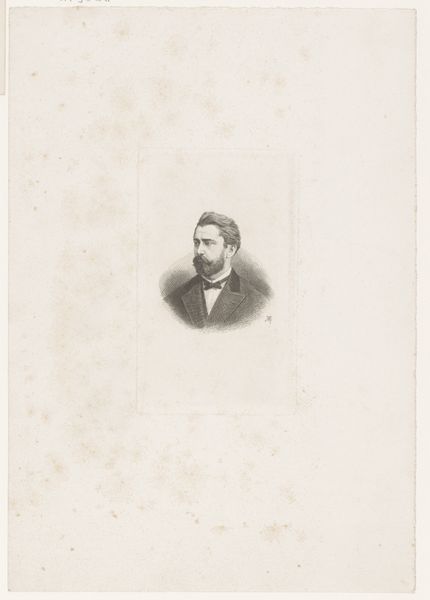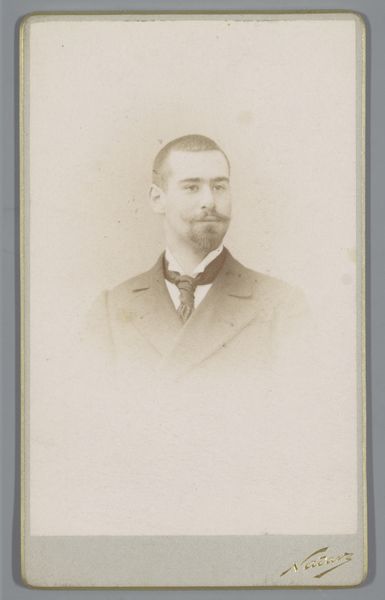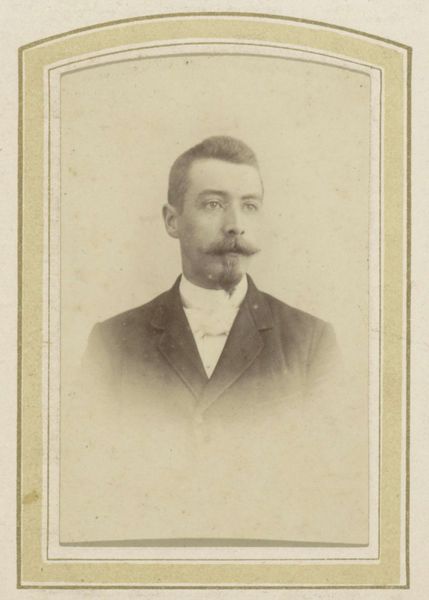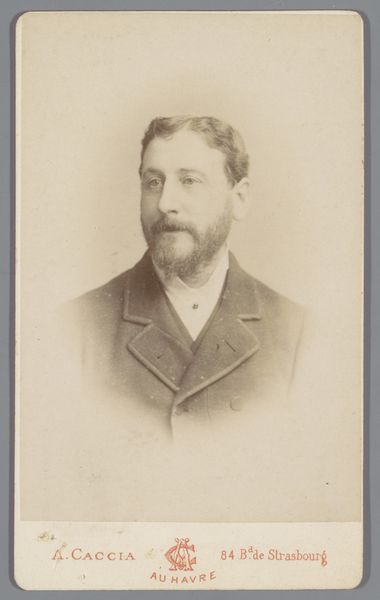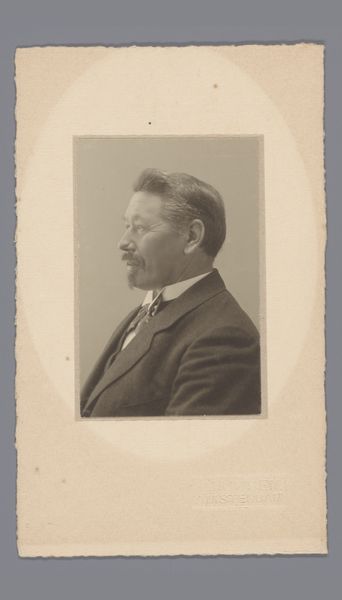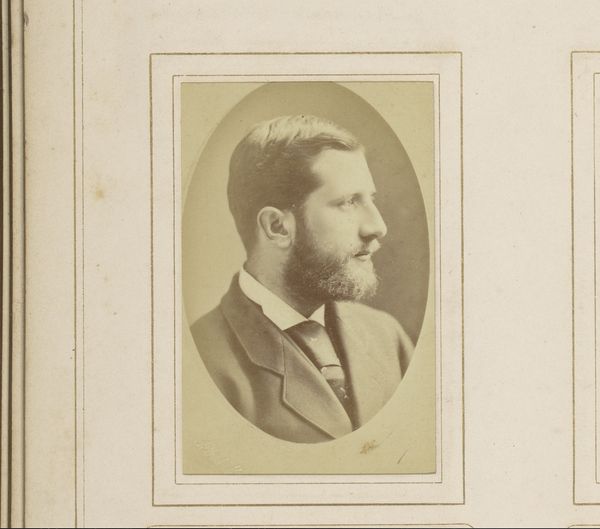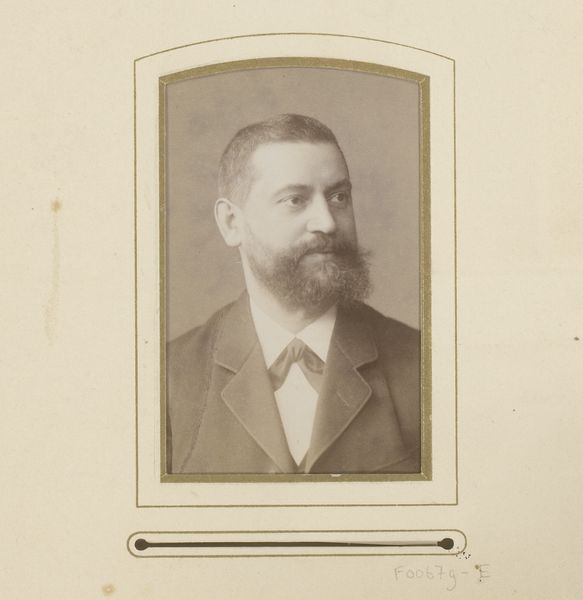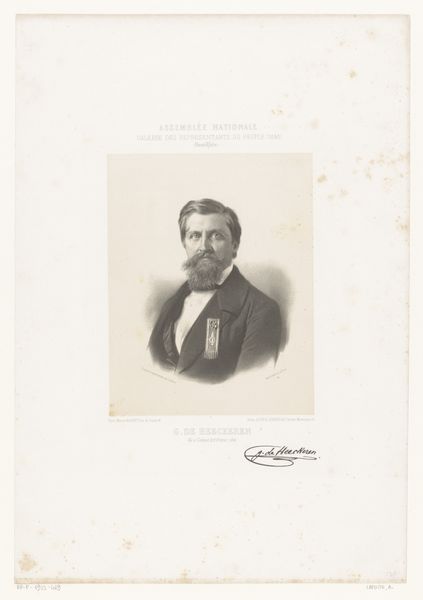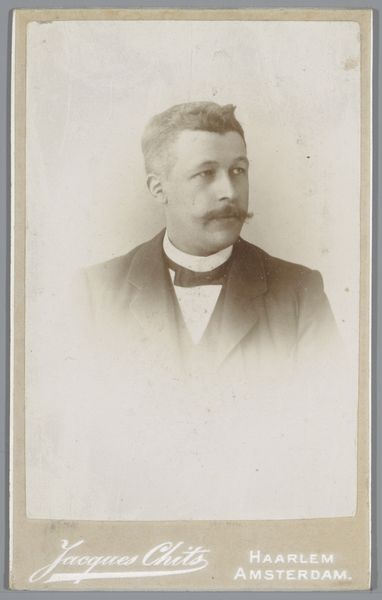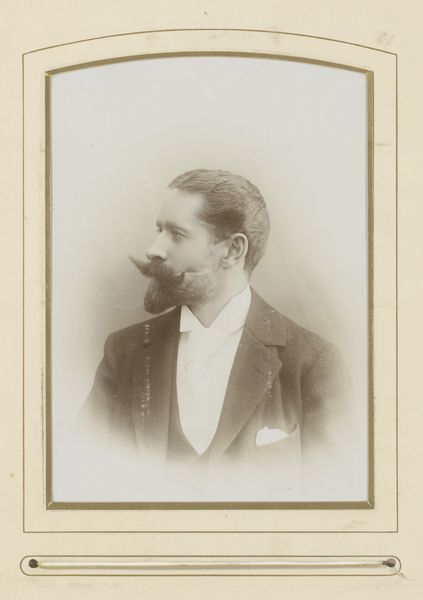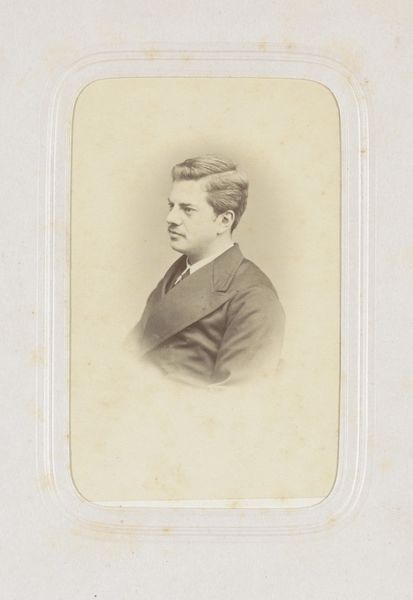
photography, albumen-print
#
portrait
#
16_19th-century
#
photography
#
historical photography
#
yellow element
#
albumen-print
#
realism
Dimensions: height 140 mm, width 96 mm
Copyright: Rijks Museum: Open Domain
Curator: Here we have "Portret van een man met snor en baard, en profil," which translates to "Portrait of a Man with Mustache and Beard, in Profile." This albumen print is dated sometime between 1850 and 1900. Editor: There’s something strikingly austere about it. The monochrome tones and sharp profile convey a sense of solemn dignity, wouldn’t you say? Curator: Indeed. Profile portraits were common, referencing classical sculpture and reinforcing societal ideals of respectability, think of the rising middle class seeking representation and status. Editor: And this particular print, made through the albumen process… I can almost smell the chemicals! It's amazing how egg whites were used to bind the photographic chemicals to the paper. It really underscores the craft involved in early photography. Curator: Exactly, the choice of albumen reflects a particular moment in photography's development as a mode of social documentation. These portraits democratized art, offering wider access than painted portraits. Editor: There’s an interesting tension though, isn’t there? The technology allows for mass production, yet each albumen print would still have variations, a unique quality from the handmade process. Imperfections would be more the rule. Curator: Good point. It highlights the tension between standardization and the indexical nature of the photographic process. Photography simultaneously promised accurate representation while being subjected to socio-political and cultural uses. Editor: Seeing the texture, the physical reality of the print, I’m struck by how much labor went into producing what appears at first glance a simple portrait. Preparing the plates, mixing chemicals... all these unseen processes shaped the final product. Curator: Precisely, this portrait offers a lens to understand 19th-century social aspirations intertwined with emerging photographic technologies and how photography reshaped how people wished to present themselves. Editor: Considering how widely distributed photographic portraiture was, one can imagine studios employing people with expertise, and laborers executing a particular step in the image reproduction assembly line, almost like industrial factories. Curator: It redefines who could be the subject of art while establishing and reinforcing specific visual conventions and class ideals within those representations. Editor: Yes, seeing the man this way, framed, printed, reproduced, and viewed now—it emphasizes a different aspect to portraiture. Let’s turn our attention now to the next image.
Comments
No comments
Be the first to comment and join the conversation on the ultimate creative platform.
